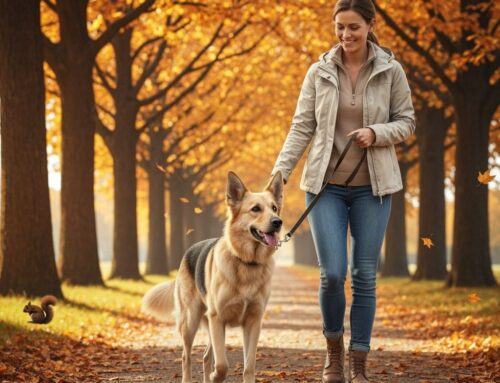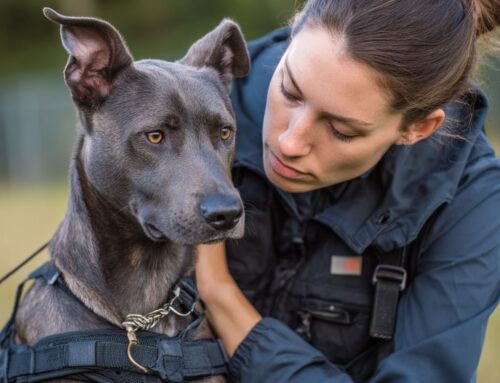Chewing is a natural and necessary activity for all dogs, but what to chew and when to chew is when we owners come in. Inappropriate chewing ruins furniture, prized household and clothing objects, and even electrical cords, the latter of which can seriously harm your dog or even cause a fire. The sooner your dog understands the rules and regulations behind chewing, the safer he, and everyone in the household will be.
Why Do Dogs Chew?
Every dog has his own motivation for chewing, whether it be your best pair of loafers or his nylon bones. Clearly, chewing your shoes is a no-no, while gnawing on his nylon bone is perfectly acceptable.
Whatever your dog’s designated item, there is any number of reasons why he is compelled to chew away. Some of these include the following.
Puppies
Simply put, young puppies don’t know any better. They don’t know what’s an acceptable chewing object, and what isn’t. Plus, just like human babies, they suffer from sore gums from teething. Chewing provides some comfort from that pain.
Boredom
Without something to do, dogs get bored. This is especially true for dogs who are left alone for long periods during the day. Perhaps you are one of those dog parents who have come home after a day at work to find your home in tatters. Your dog was bored.
Hunger
An empty stomach can propel your dog to put anything that even vaguely smells like food into his mouth. Think of the shoes you were wearing while baking that apple pie. If hunger is your dog’s reason for chewing, take a close look at his diet to make sure he is getting enough in terms of quantity and quality.
Separation Anxiety
This is one of the main reasons dogs thrust themselves into a chewing rampage. Separation anxiety is caused by many things and often a dog will need some professional help to deal with and hopefully overcome it. Some dogs literally lose it when they are left alone and can cause major destruction in your home.
Fear
Another emotional reason for chewing behavior is fear, which can be closely related to separation anxiety. Likewise, chewing becomes a way of coping with fear.
Physical Delight
Yes, delight. Chewing gives dogs pleasure, just like chewing gum, candy, or a favorite food does the same for us humans.
Steps to Help Stop Your Dog from Chewing Household Items
Chewing dogs can be very destructive to your treasured and all household items. Now that you understand why your dog chews, the next step is to work to stop the destructive chewing behavior. The operative word is destructive because dogs do need to chew as long as they are redirected to the right things to gnaw on.
Take Inventory
Your dog doesn’t know a $500 leather purse from a Nylon bone, so it’s up to you to go through your home and make sure anything you don’t want your dog to chew is out of canine sight, out of canine mind. Specifically, put away, or out of reach, eyeglasses, clothing, purses, trash receptacles, shoes, books, children’s toys, and remote controls. Small toys are extremely dangerous as they can become lodged in a dog’s throat and cause him to choke.
Have a Toy Party
Purchase age-appropriate and safe toys for your pup. Plush toys are fine for some dogs, but others take great pleasure in eviscerating them and potentially swallowing and choking on the stuffing. There is also the danger of the squeaker which can also be swallowed, causing a preventable tragedy.
Nylon bones are a good, strong option that many dogs savor, especially since some are flavored. Examine rubber toys closely. Some are strong and durable, but others can be chewed into small pieces, posing another danger to dogs.
Pay Attention
Always keep an eye on your dog. Provide him with several appropriate toys to keep him busy. If he wanders off in the direction of the remote control, take him to a safe place. When you go out or can’t watch him, confine him to a crate or a small space where he cannot get himself into chewing trouble.
Stimulate Him with Exercise and Mental Challenges
A well-exercised, fit dog is not as likely to get himself into chewing trouble. Simply put, he will be tired and content to loll around, chewing happily on an appropriate toy. And believe it or not, when on a walk, sniffing provides the maximum amount of stimulation for your dog. Running 5 miles will not provide him with as much stimulation. Invest in one or two puzzle toys, or simply concoct a canine scavenger hunt by hiding a bunch of treats in your home or backyard.
Use Basic Commands
There are several basic commands that will help you keep your dog on the chewing straight and narrow. These include:
- Leave it: This command is crucial for more than chewing and could one day save your dog’s life.
- Sit: The most basic command; this keeps your dog from moving into territory where danger lurks.
- Come: Another lifesaver, this command should bring your dog directly back to you.
Use the Redirect Command
Using the redirect command can keep your dog out of trouble by taking his attention away from something problematic and putting it on a known desirable, such as a treat, toy, or even a walk. For example, when his focus is on that irresistible remote control, or worse yet, in his mouth, hand him a peanut butter or kibble-filled Kong as an enticing replacement. Practice this activity a lot to be sure your dog responds right away.
What to Do for a Teething Puppy
When you find yourself getting frustrated with your puppy’s seemingly incessant chewing, take a deep breath and remember that he’s hurting. Buy a puppy Kong, fill it with something yummy, and freeze it. Just like with a human baby, the cold will soothe his sore and inflamed gums.
There is no magic bullet for instantly stopping your dog from chewing your household items. With consistency, attention, appropriate toys, and behavior modification, your dog’s chewing will eventually be controlled.
And, if you need professional help, we are always here to help. Call award-winning Performance K9 Training, where your dog will receive competent and caring training by David Greene, founder, and chief trainer.
Performance K9 also offers board and train options where your dog stays with us for a set period and receives expert training to help him overcome his fears.








